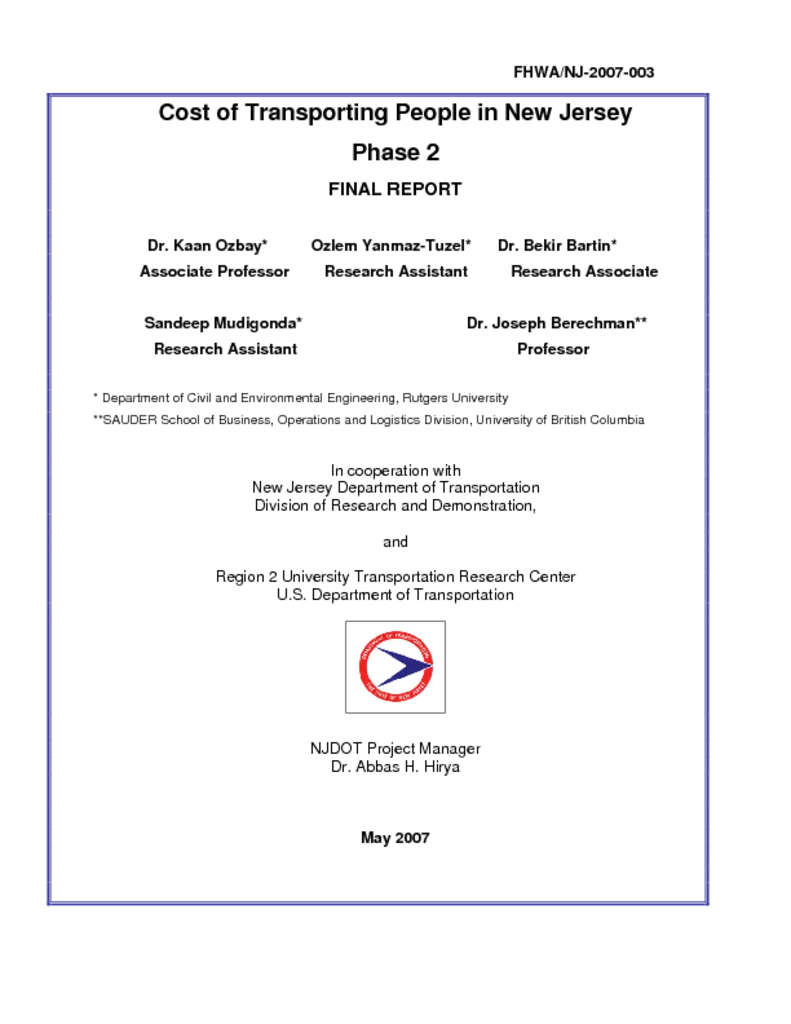This project has developed a state-of-the-art GIS-based interactive tool for calculating network-wide full marginal costs (FMC) of highway transportation in New Jersey. The new tool is used to evaluate the short-term impacts of policy implications on the marginal costs of different trips. The illustration of the proposed FMC calculation methodology on a sample network shows that the “traditional” distance-based approach overestimates the marginal cost of the network, and more importantly it provides marginal cost on the basis of distance rather than trips, which is the most basic way of considering travel behavior of drivers. Results obtained from application of the new tool on the North Jersey network demonstrate that FMC between an Origin-Destination (O-D) pair exhibit differences among various paths that connect any single O-D pair. These results also demonstrate the importance of analyzing trips based on a number of factors in addition to travel times such as volume, capacity, road type, and distance. The analyses conducted to observe the short-term impacts of capacity investments on several route sections (NJ Route 18, NJ Route 17, NJ Route 3, and the Garden State Parkway) demonstrate that even though capacity investments can reduce the marginal cost of users, the amount of savings mainly depends on the characteristics of that region, the excessive demand that needs to be satisfied, and the reduced congestion delays.




